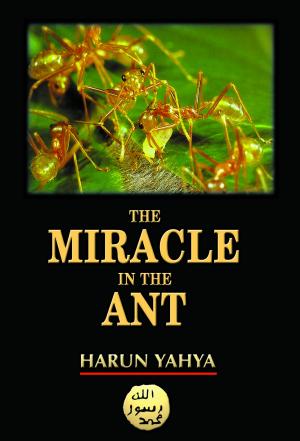| Author: | Harun Yahya | ISBN: | 9780463704820 |
| Publisher: | Global Publishing | Publication: | July 1, 2018 |
| Imprint: | Smashwords Edition | Language: | English |
| Author: | Harun Yahya |
| ISBN: | 9780463704820 |
| Publisher: | Global Publishing |
| Publication: | July 1, 2018 |
| Imprint: | Smashwords Edition |
| Language: | English |
There are hundreds of species of spiders in the world. These small animals can appear to us sometimes as a construction engineer capable of performing calculations for building its nest, sometimes as an interior designer making complicated plans, sometimes a chemist making incredibly strong and flexible threads, deadly venoms, and dissolving acids, and sometimes as a hunter using the most cunning tactics.
Despite their numerous superior characteristics, nobody in his daily life even bothers to think what special creations spiders are. According to this underestimation there is nothing surprising in the existence of spiders, nor in that of anything else. but this is a completely mistaken way of thinking. Because, as we begin to learn more about spiders, as about the behaviour of all creatures, examining for example their methods of hunting, reproducing, and defending themselves, we find ourselves face-to-face with characteristics that fill us with awe.
In nature all living things adopt behaviour patterns that require intelligence in order to live their lives. These behaviour patterns, that underlie skills, proficiencies and superior planning capabilities, have one thing in common. Each and every one necessarily requires ability. Skills that a human being can master only by learning, and gaining proficiency and experience, already exist in these living creatures from the moment they are born. The later parts of this book consist of questions which need to be answered: how these abilities, which will be described in some detail, came about, and how living creatures learned them. These living things, acting in accordance with such highly intelligent blueprints, hunting with such calculation, and when necessary, behaving like chemical engineers, knowing what material to produce in a particular situation, really baffle scientists who study them. So much so that even evolutionist scientists admit that the cleverest living creatures have characteristics necessitating intelligence. Scientist Richard Dawkins, despite the fact that he is an evolutionist, describes spiders' behaviour in this way in his book, Climbing Mount Improbable:
There are hundreds of species of spiders in the world. These small animals can appear to us sometimes as a construction engineer capable of performing calculations for building its nest, sometimes as an interior designer making complicated plans, sometimes a chemist making incredibly strong and flexible threads, deadly venoms, and dissolving acids, and sometimes as a hunter using the most cunning tactics.
Despite their numerous superior characteristics, nobody in his daily life even bothers to think what special creations spiders are. According to this underestimation there is nothing surprising in the existence of spiders, nor in that of anything else. but this is a completely mistaken way of thinking. Because, as we begin to learn more about spiders, as about the behaviour of all creatures, examining for example their methods of hunting, reproducing, and defending themselves, we find ourselves face-to-face with characteristics that fill us with awe.
In nature all living things adopt behaviour patterns that require intelligence in order to live their lives. These behaviour patterns, that underlie skills, proficiencies and superior planning capabilities, have one thing in common. Each and every one necessarily requires ability. Skills that a human being can master only by learning, and gaining proficiency and experience, already exist in these living creatures from the moment they are born. The later parts of this book consist of questions which need to be answered: how these abilities, which will be described in some detail, came about, and how living creatures learned them. These living things, acting in accordance with such highly intelligent blueprints, hunting with such calculation, and when necessary, behaving like chemical engineers, knowing what material to produce in a particular situation, really baffle scientists who study them. So much so that even evolutionist scientists admit that the cleverest living creatures have characteristics necessitating intelligence. Scientist Richard Dawkins, despite the fact that he is an evolutionist, describes spiders' behaviour in this way in his book, Climbing Mount Improbable:















